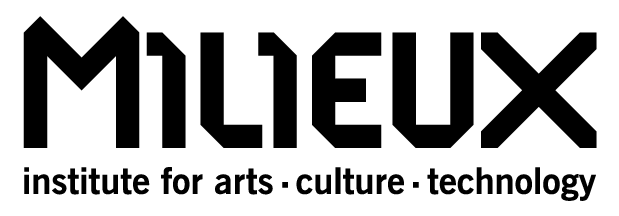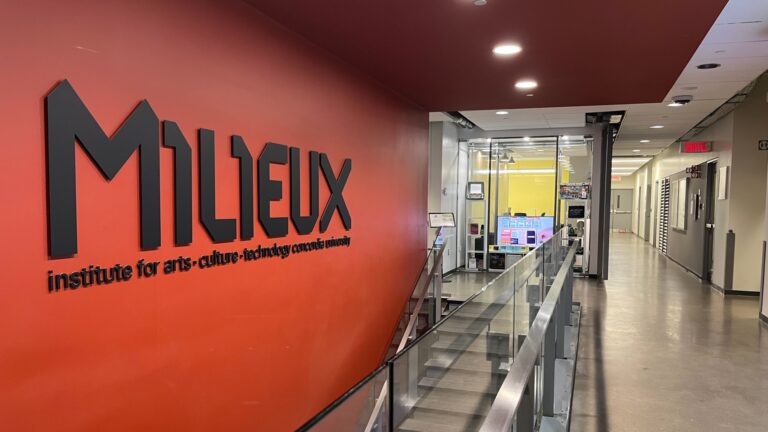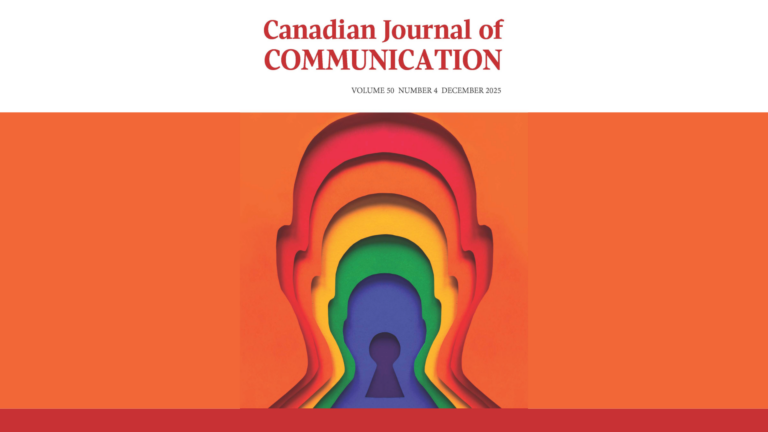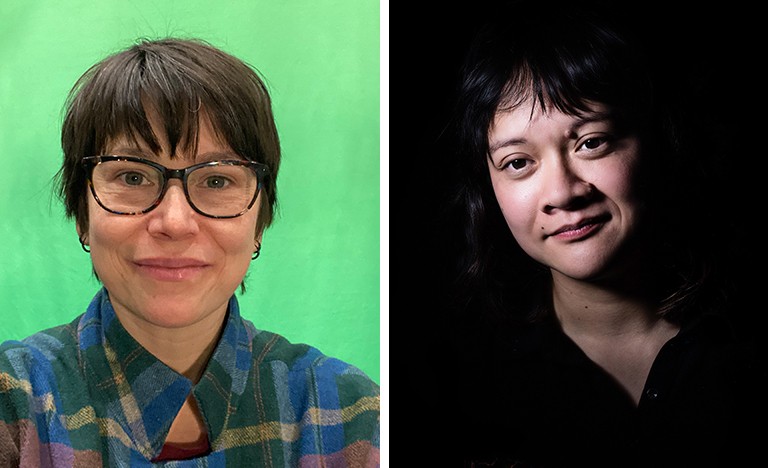
A robot tries to learn the guitar, but it malfunctions and obsessively plays the E tone repeatedly. But, as the years pass, Anglaopheme develops complex sonic improvisations, a style of its own, and is even joined by other robotic music to form The Three Sirens, a jazz improvisation band. In another corner of the world, a human is awoken by an alarm clock with wireless sensors that have tracked their every move, and uses that data to perfume the air and makes a custom playlist to match their sleep quality. These seemingly futuristic but entirely real stories come from Sofian Audry’s Art in The Age of Machine Learning (2021) and Christopher Salter’s Sensing Machines: How Sensors Shape Our Everyday Life (2022), two books dealing with art and technology and both of which were released in recent months. To celebrate the occasion – and as part of Milieux’s warm-up for In the Middle, A Chimera – Anteism Books held a book launch and roundtable discussion featuring the authors and Montréal-based curator/scholar Erandy Vergara Vargas, director of the Milieux Institute Bart Simon, and writer Jhave.
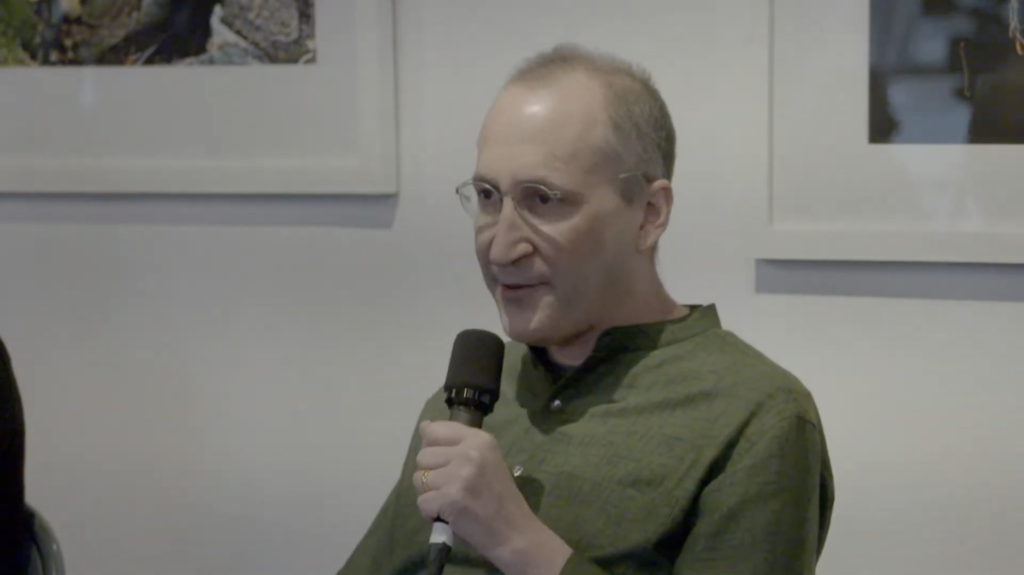
After Audry and Salter read excerpts from their books, Jhave opened the discussion by recounting a dream where he saw Rebecca Freebrink and Suzanne Kite – two artists who appear in Audry’s book – giving a talk and saying that “when sky women fell into the ocean and split in half, then there emerged a burst of all these sentient entities.” This imagery reminded Jhave of the mythical energy contained in Audry and Salter’s books since both deal with two different technologies that have, in a way, ushered new visions of intelligence and consciousness, ones that are neither wholly machinic nor human. Gone are the days of easels, chisels and even cameras; nowadays, artistic tools like machine learning and sensing machines possess an uncanny resemblance to human thinking. Yet, tools have always been created in order to perfect human imperfections, to move beyond what humans can do on their own. So, as Jhave and Bart Simon noted, Audry and Selter’s books historicize machine learning and sensing machines in the arts while imbuing the technologies with awe and possibility thanks to their mythic storytelling and engaging language. The books reach broad audiences while challenging popular myths about technology and art – held by both supporters and critics. Audry’s book crushes the myth that machine learning works magically by showing its material operations, while Salter riffs on our apprehension of sensing machines by focusing on both the good and bad, lingering in a more interesting zone of ambiguity. As Erandy Vergara noted, the authors push the study of these technologies and their artistic applications beyond the utopian writings of the 90s and the deconstructive and critical approach of recent years. Beyond the dichotomy of the utopian and the critical, Vergara praised their focus on individual artworks and nuanced exploration of these technologies.
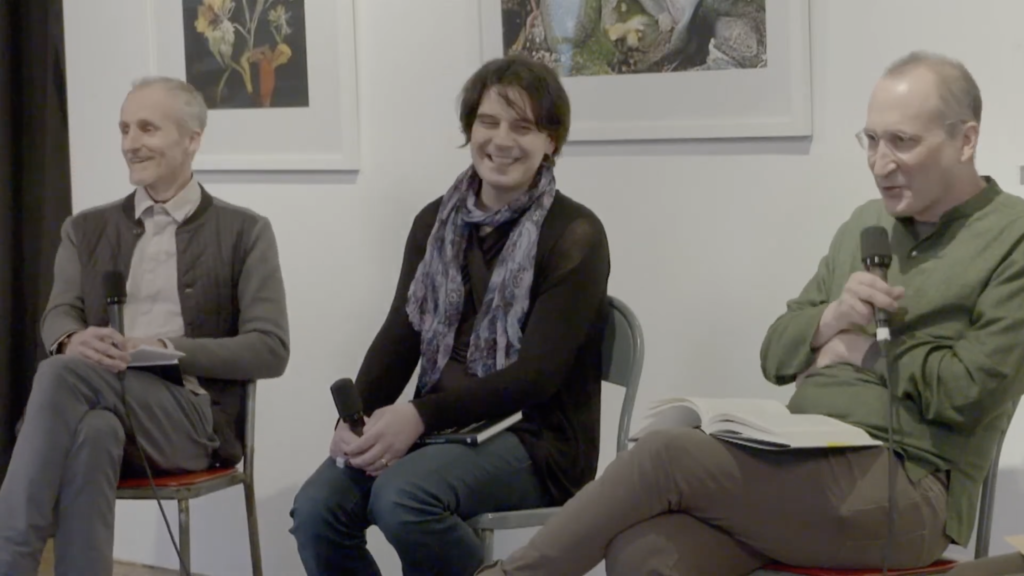
The perspectives offered in these works stem from the authors’ unique backgrounds. Audry started in artificial intelligence research as a student in Yoshue Bengio’s lab, where he became fascinated with neural networks as they seemed to exhibit human intelligence. After that, he moved to art and academic applications of technology, where he realized that there are two aspects to this story. The computer science field was very systematic but not very critical of the technology, while humanities engaged in critique without a clear understanding of how to work with the technologies. This is why Audry decided to write a pedagogical book that an undergraduate student and an emerging artist could read, without math formulas, but still grounded in the materiality of the systems to impart an understanding of how they work before criticizing their operation. Similarly, Salter expressed that he didn’t want to tell the same story being told in the humanities that “technology is bad, it’s destroying the world.” Initially, his book was supposed to be a cultural history of psychophysics, a 19th-century field that tried to measure slight differences in sense perception. But when his editor told Salter to start the book with contemporary accounts instead of a historical narrative, he decided to write an introduction that set up the reader with a story that seemed as if it was from a dystopian science fiction using technologies that are already being used. The book focuses on the dangers of sensing machines, but it also examines our fascination and desire to be connected to devices to take us away from our everyday lives. Salter explained he was going back and forth between these technologies’ predatory and liberatory potentials. Both authors suggested that instead of rejecting the technologies tout court, we should engage directly with them to enact a critique that aims to transform them to serve non-capitalist principles.
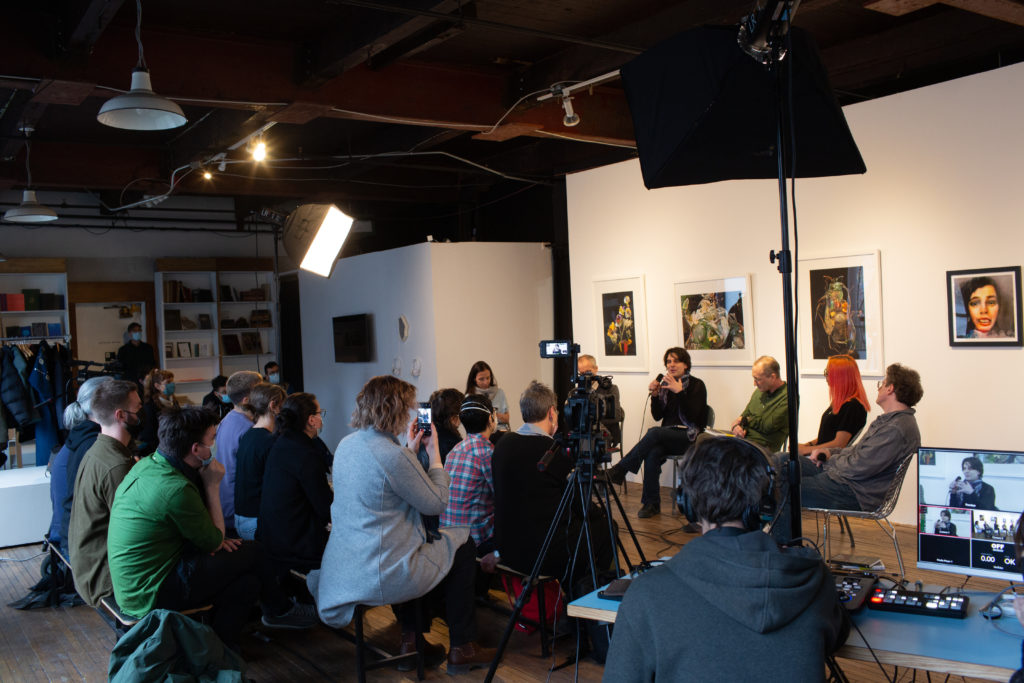
Jhave’s dream of a burst of sentient beings is a fascinating distillation of an idea that emerged throughout the roundtable discussion. AI, machine learning, sensors, and machinic intelligence are not necessarily replacing human consciousness; Salter argued that Western anthropocentrism had led us to see ourselves in our machines, which has in turn led to fears of machines replacing human artists. But, as Andreas Brockman said and Salter reminded us, machines cannot make art because art is a social field and practice. Indeed, machines are intelligent in a way that resembles us since we created them, but they are intelligent in their own way. And this is great for artists because these machines show us something about ourselves that we might not be able to see. This entanglement, these shifting borders between humans and machines, is a crucial aspect of machine learning and sensing machines, and it should propel theory forward into unexplored questions.
